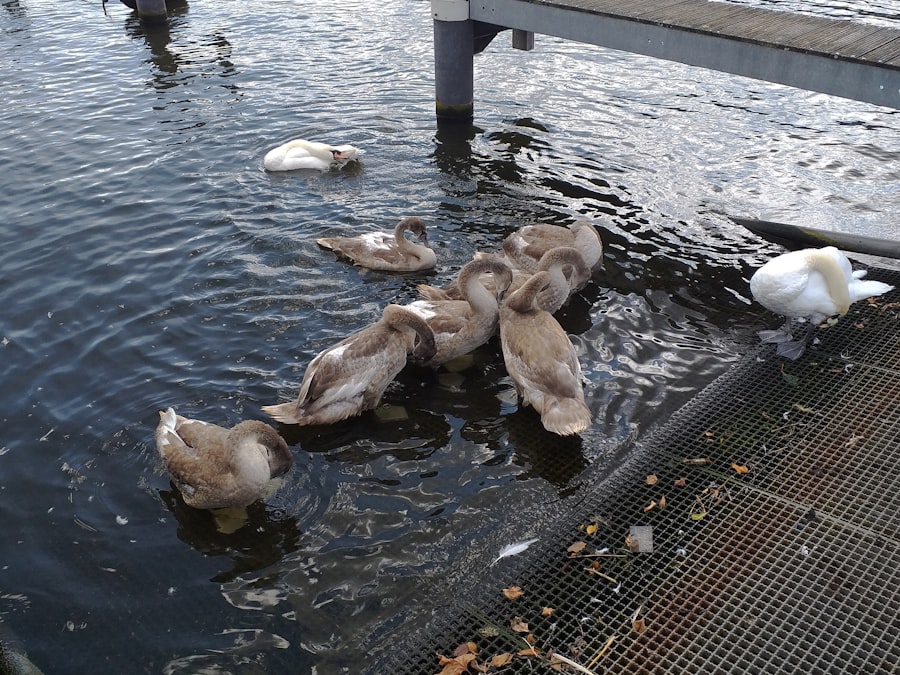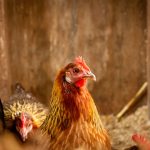Chickens are highly susceptible to heat stress due to their lack of sweat glands and reliance on panting for temperature regulation. High temperatures can quickly lead to overheating in chickens, causing various health issues. Heat stress can result in decreased egg production, poor feed conversion, reduced growth rates, and in severe cases, mortality.
It also compromises the chickens’ immune systems, increasing their vulnerability to diseases. Understanding the impact of heat on chickens is crucial for poultry farmers to implement effective mitigation strategies. Signs of heat stress in chickens include panting, wing spreading, reduced activity, decreased feed intake, and increased water consumption.
Chickens may also display lethargy, drooping wings, and pale combs and wattles. Recognizing these signs is essential for farmers to take proactive measures in alleviating heat stress in their flocks. Informed decisions about providing adequate shade and shelter, ensuring access to cool, fresh water, utilizing cooling methods, adjusting feeding schedules, and monitoring for signs of heat stress and illness are critical for maintaining flock health.
Chickens’ limited ability to regulate body temperature makes them particularly vulnerable to heat stress. Exposure to high temperatures can quickly lead to overheating and associated health problems. The significant impact of heat stress on chicken productivity and well-being underscores the importance of poultry farmers understanding its implications.
By recognizing heat stress signs and implementing appropriate measures, farmers can help their chickens thrive even in hot weather conditions.
Table of Contents
- 1 Providing adequate shade and shelter
- 2 Ensuring access to cool, fresh water
- 3 Utilizing cooling methods such as misting or fans
- 4 Adjusting feeding schedules to avoid peak heat times
- 5 Monitoring for signs of heat stress and illness
- 6 Implementing additional measures for extreme heat conditions
- 7 FAQs
- 7.1 What are some ways to keep chickens cool in hot weather?
- 7.2 How important is it to keep chickens cool in hot weather?
- 7.3 What are signs that chickens may be suffering from heat stress?
- 7.4 What should I do if I suspect my chickens are suffering from heat stress?
- 7.5 Are there specific breeds of chickens that are better suited for hot weather?
Key Takeaways
- Heat can have a significant impact on chickens, affecting their health and productivity.
- Providing adequate shade and shelter is crucial to protect chickens from the heat.
- Ensuring access to cool, fresh water is essential for keeping chickens hydrated and cool.
- Utilizing cooling methods such as misting or fans can help lower the temperature in chicken coops.
- Adjusting feeding schedules to avoid peak heat times can help reduce heat stress in chickens.
- Monitoring for signs of heat stress and illness is important for early intervention and treatment.
- Implementing additional measures, such as using ice packs or increasing ventilation, may be necessary during extreme heat conditions.
Providing adequate shade and shelter
Protecting Chickens from Direct Sunlight
One of the most important strategies for mitigating the impact of heat on chickens is to provide adequate shade and shelter. This can help protect chickens from direct sunlight and reduce the ambient temperature in their living environment. Natural shade from trees or man-made structures such as awnings or tarps can provide relief from the sun’s rays.
Maintaining a Comfortable Temperature
Additionally, ensuring proper ventilation in chicken coops and housing can help maintain a comfortable temperature for the birds. Adequate airflow can help dissipate heat and humidity, creating a more comfortable environment for chickens. In addition to shade and ventilation, providing shelter from extreme weather conditions such as strong winds or heavy rain is essential for the well-being of chickens.
Creating a Comfortable Living Environment
By providing natural or man-made shade and ensuring proper ventilation in chicken coops, farmers can create a more comfortable living environment for their flocks. Additionally, shelter from extreme weather conditions such as strong winds or heavy rain is essential for the well-being of chickens. By prioritizing shade and shelter, poultry farmers can help their chickens thrive even in challenging weather conditions.
Ensuring access to cool, fresh water
Access to cool, fresh water is essential for chickens to stay hydrated and regulate their body temperature during hot weather. Poultry farmers should ensure that water is readily available to their flocks at all times, especially during periods of high temperatures. It’s important to regularly check water sources to ensure they are clean and free from contaminants that could compromise the health of the chickens.
Additionally, providing multiple water sources throughout the chicken coop or range can help prevent overcrowding and ensure all birds have access to water. In hot weather conditions, water consumption by chickens may increase as they pant to cool down. Therefore, it’s crucial for farmers to monitor water levels and refill as needed to prevent dehydration in their flocks.
Additionally, adding ice or using cooling systems to lower the temperature of drinking water can provide further relief for chickens during periods of extreme heat. By ensuring access to cool, fresh water, poultry farmers can help their flocks stay hydrated and healthy in hot weather conditions. Access to cool, fresh water is crucial for chickens to stay hydrated and regulate their body temperature during hot weather.
Poultry farmers should prioritize providing multiple water sources throughout the chicken coop or range to prevent overcrowding and ensure all birds have access to water. Regularly checking water sources for cleanliness and refilling as needed can help prevent dehydration in chickens during periods of high temperatures. By ensuring access to cool, fresh water, farmers can help their flocks stay healthy and comfortable even in hot weather conditions.
Utilizing cooling methods such as misting or fans
In addition to providing shade and shelter, poultry farmers can utilize various cooling methods to help alleviate heat stress in their flocks. Misting systems can be installed in chicken coops or outdoor ranges to create a fine spray of water that helps lower the ambient temperature. Additionally, fans can be used to improve air circulation and reduce heat buildup in enclosed spaces.
These cooling methods can help create a more comfortable environment for chickens during periods of high temperatures. Another effective cooling method is evaporative cooling, which utilizes the natural process of evaporation to lower the temperature in chicken coops or housing. This can be achieved through the use of evaporative cooling pads or wetting down surfaces to facilitate the evaporation process.
By utilizing these cooling methods, poultry farmers can help their flocks stay cool and comfortable even in hot weather conditions. Utilizing cooling methods such as misting systems, fans, and evaporative cooling can help alleviate heat stress in chickens during periods of high temperatures. These methods can help lower the ambient temperature in chicken coops or outdoor ranges, creating a more comfortable environment for the birds.
By implementing effective cooling strategies, poultry farmers can help their flocks thrive even in hot weather conditions.
Adjusting feeding schedules to avoid peak heat times
Feeding schedules can be adjusted to avoid peak heat times and reduce the metabolic heat generated by digestion in chickens. Feeding chickens during the cooler parts of the day, such as early morning or late evening, can help minimize the impact of heat stress on their bodies. Additionally, providing smaller, more frequent meals throughout the day instead of large meals at once can help reduce the metabolic heat produced during digestion.
It’s also important for farmers to monitor feed consumption during hot weather conditions and adjust feeding amounts as needed. High temperatures can reduce appetite in chickens, so it’s crucial to ensure they are still receiving adequate nutrition despite decreased feed intake. By adjusting feeding schedules and monitoring feed consumption, poultry farmers can help their flocks maintain optimal nutrition and minimize the impact of heat stress on their bodies.
Adjusting feeding schedules to avoid peak heat times and reduce metabolic heat production in chickens can help alleviate the impact of heat stress on their bodies. Feeding chickens during cooler parts of the day and providing smaller, more frequent meals can help minimize the metabolic heat generated during digestion. Additionally, monitoring feed consumption and adjusting feeding amounts as needed can ensure that chickens receive adequate nutrition despite decreased appetite during hot weather conditions.
Monitoring for signs of heat stress and illness

Monitoring Flock Health During Hot Weather
Heat stress can have devastating effects on poultry flocks, making it crucial for farmers to monitor their chickens for signs of heat stress and illness during hot weather conditions.
### Identifying Heat Stress in Chickens
Observing behavior changes is key to identifying heat stress in chickens. This includes watching for panting, wing spreading, reduced activity, and decreased feed intake. Additionally, checking for physical signs such as pale combs and wattles or drooping wings can help identify chickens that may be experiencing heat stress.
### Monitoring for Signs of Illness
In addition to monitoring for heat stress, farmers should also be vigilant for signs of illness that may be exacerbated by hot weather conditions. This includes symptoms such as respiratory distress, diarrhea, or lethargy that could indicate underlying health issues in chickens.
### Proactive Measures for a Healthy Flock
By regularly monitoring for signs of heat stress and illness, poultry farmers can take proactive measures to address any issues that may arise in their flocks. This includes alleviating discomfort in chickens and addressing any underlying health issues. Regular monitoring is essential for ensuring the well-being of chickens during hot weather conditions.
Implementing additional measures for extreme heat conditions
In extreme heat conditions, additional measures may be necessary to protect chickens from the adverse effects of high temperatures. This can include providing supplemental cooling methods such as portable misting systems or temporary shelters with improved ventilation. Farmers may also consider adjusting management practices such as reducing stocking density or temporarily altering feeding schedules to minimize the impact of heat stress on their flocks.
It’s also important for farmers to have a contingency plan in place for extreme heat events, including access to emergency supplies such as extra water sources or electrolyte supplements for chickens. By implementing additional measures for extreme heat conditions, poultry farmers can help ensure the well-being of their flocks even in the face of challenging weather circumstances. In extreme heat conditions, additional measures may be necessary to protect chickens from the adverse effects of high temperatures.
This can include providing supplemental cooling methods such as portable misting systems or temporary shelters with improved ventilation. Additionally, having a contingency plan in place with access to emergency supplies can help poultry farmers address any challenges that may arise during extreme heat events. In conclusion, understanding the impact of heat on chickens is essential for poultry farmers to implement effective strategies for mitigating its effects on their flocks.
Providing adequate shade and shelter, ensuring access to cool, fresh water, utilizing cooling methods such as misting or fans, adjusting feeding schedules, monitoring for signs of heat stress and illness, and implementing additional measures for extreme heat conditions are all crucial aspects of managing heat stress in chickens. By prioritizing these strategies, poultry farmers can help their flocks thrive even in hot weather conditions while minimizing the impact of heat stress on their productivity and well-being.
If you’re looking for ways to keep your chickens cool in hot weather, you may also be interested in learning about the best type of coop for your chickens. Check out this article to find out more about the different types of coops and which one may be best for your flock.
FAQs
What are some ways to keep chickens cool in hot weather?
Some ways to keep chickens cool in hot weather include providing shade, ensuring proper ventilation in the coop, offering cool water to drink, and using misters or fans to lower the temperature.
How important is it to keep chickens cool in hot weather?
It is very important to keep chickens cool in hot weather as they are susceptible to heat stress, which can lead to decreased egg production, illness, and even death.
What are signs that chickens may be suffering from heat stress?
Signs of heat stress in chickens include panting, lethargy, decreased egg production, and in severe cases, convulsions or death.
What should I do if I suspect my chickens are suffering from heat stress?
If you suspect your chickens are suffering from heat stress, move them to a cooler area with shade, provide cool water, and consider using fans or misters to lower the temperature. If symptoms persist, consult a veterinarian.
Are there specific breeds of chickens that are better suited for hot weather?
Yes, some breeds of chickens are more heat-tolerant than others. Breeds such as Leghorns, Rhode Island Reds, and Sussex are known for their ability to handle hot weather better than breeds with heavier feathers.
Meet Walter, the feathered-friend fanatic of Florida! Nestled in the sunshine state, Walter struts through life with his feathered companions, clucking his way to happiness. With a coop that’s fancier than a five-star hotel, he’s the Don Juan of the chicken world. When he’s not teaching his hens to do the cha-cha, you’ll find him in a heated debate with his prized rooster, Sir Clucks-a-Lot. Walter’s poultry passion is no yolk; he’s the sunny-side-up guy you never knew you needed in your flock of friends!







